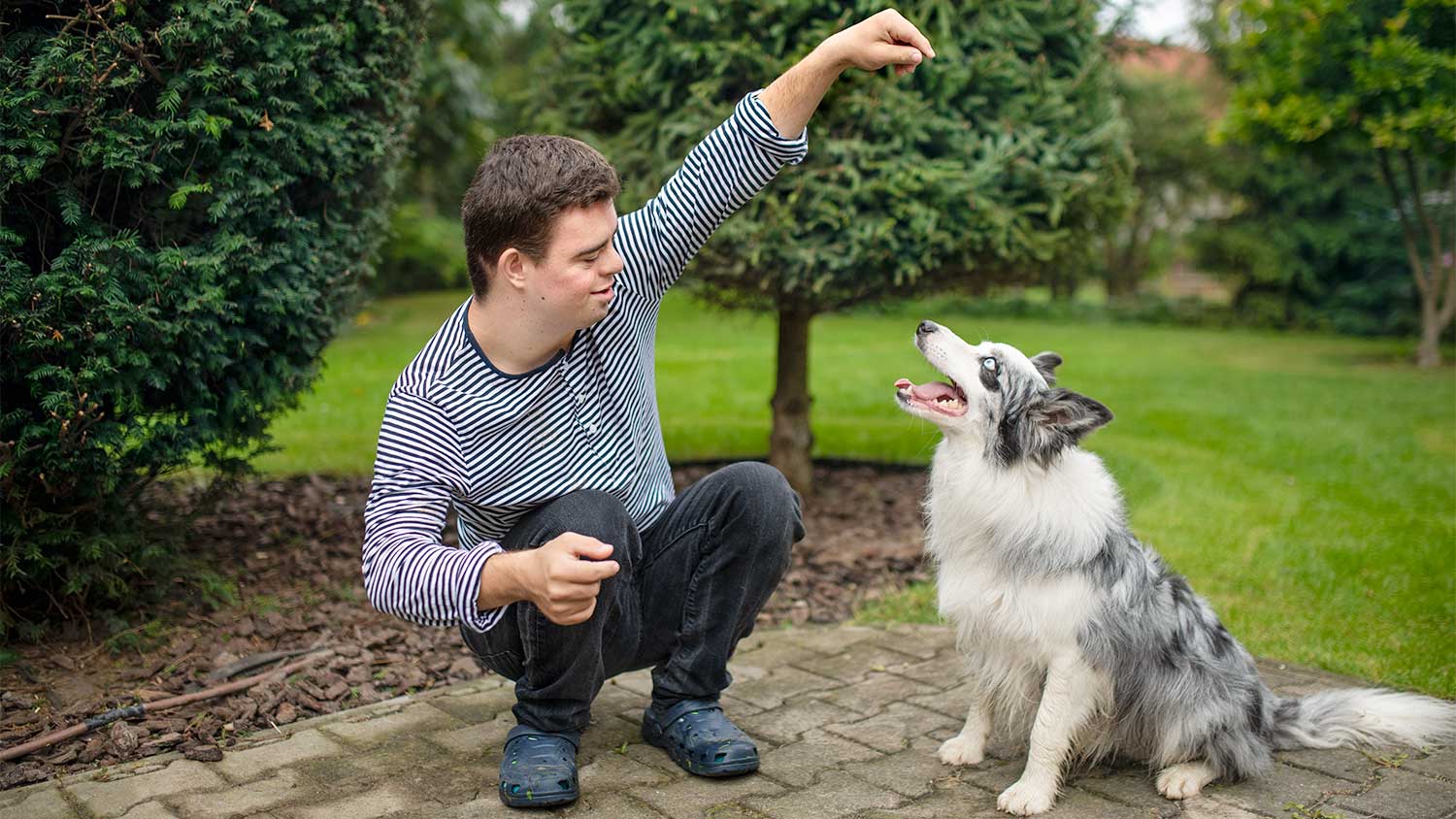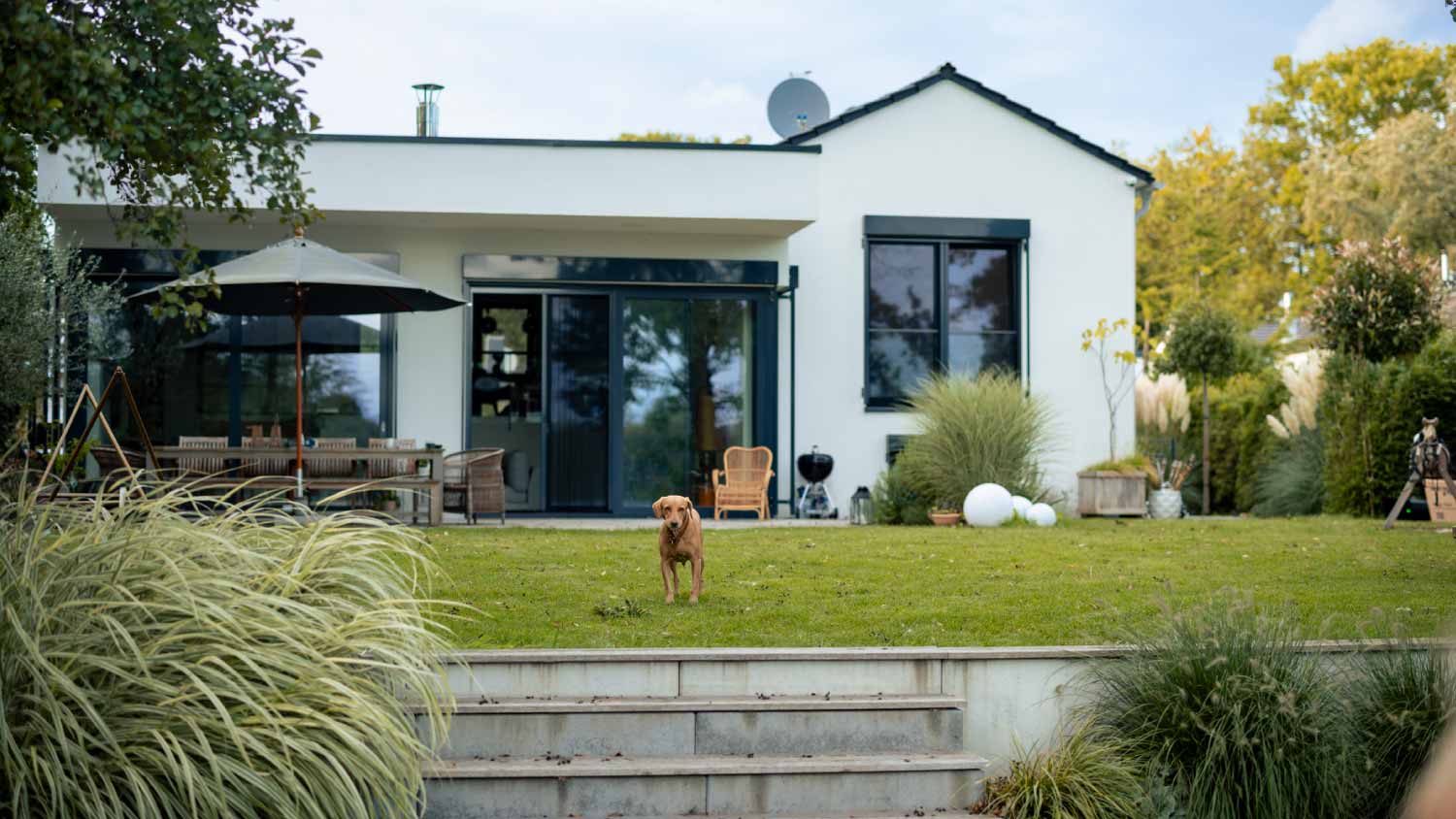11 Tips to Keep Your Dog From Running Away From Home
Halt your Houdini hound


Every year, around 10 million pets are lost in the United States, according to American Humane. The last thing you’d want for your beloved dog is for them to become a statistic. If your dog keeps running away from home, there are a few ways you can make it stop. Sometimes it’s as simple as figuring out why your pup wants to run away. But following some home and property modification tips like the ones below can keep your dog safe and happy in your yard.
1. Modify or Add Fencing
Whether your dog is scaling the fence or squeezing through a loose slat, sometimes simple repairs or modifications are all you need to curb your dog’s cruising. Fence repair costs might be as low as $125 if you just need to mend a slat or a couple of holes. For expert jumpers or climbers, you might have to heighten your fence (anything below 6 feet is usually still scalable) or add an angled lean-in with some chicken wire on the top of the fence. Save some money by DIYing simple patch-ups, or call a local fencing contractor for bigger jobs.
If the fence is beyond repair or just a tiny, decorative picket one, you might have to install new dog fencing. This may cost upwards of $1,500, but it’s money well spent to keep your doted-on dog out of danger.
2. Dog-Proof Your Gates
If your dog makes a sprint for the gate every time it opens, don’t despair. Inexpensive ways to make it more secure include ensuring all the latches and locks are in full working order and adding a sign reminding careless delivery drivers to close the gate behind them.
Installing double gates means the person has to close the first gate before opening the second one leading into the yard. It’s also possible to fit fence or driveway gates that close automatically.
3. Add Buried Footing
Some dogs, especially breeds like terriers, are expert diggers and love to chase small critters. Bury a layer of concrete, large rocks, or chicken wire along the border of your fence for an extra layer of security. To deter the most determined diggers, the footing needs to go down at least a foot.
4. Install a Dog Run

If you don’t have secure fencing or your pup is a serial gate dasher, installing a spacious dog run with plenty of toys means they can still spend safe and fun time in the yard—providing they aren’t left in it all day and that they still get proper daily exercise. The average cost to install a dog run is $800, according to HomeAdvisor.
5. Curb the Climbing
It’s pretty frustrating if you increase the height of your fence, and fido still finds a way to freedom. Often simple dog-friendly landscape changes are enough to curb the climbing. Make sure you remove things like wood piles, garbage cans, thick trees, garden furniture, or other items that act as a ready-made climbing frame near your yard borders.
6. Block Their View
Some dogs might try to escape when they see four-legged friends or foes on the other side of the fence. By adding a hedge, dense shrubs, or ornamental grasses along the fence line, your dog may be less likely to patrol their patch. These hurdles also make it harder for them to dig under the fence or jump over it.
7. Fit Coyote Rollers
Adding coyote rollers along the top of the fence may deter a bouncing bowzer. The design might be to keep coyotes out, but they work just as well for keeping your dog in. The long, rolling metal bars prevent your pet from getting a good foothold when making the leap. Rollers are best kept as a last resort, though, as your pet could hurt themself if they fall at an awkward angle from a height.
8. Defend Against Door Dashing
Does your dog make a bid for freedom every time the front door opens? Baby gates can be your best bet, as they can keep your pup safe in another room when your doorbell rings. It also pays to encourage your dog to settle in their “place” whenever the doorbell rings or when you’re getting ready to go on a walk with them. Patience, consistency, leashing up, and tasty rewards work wonders.
9. Oversee Yard Time

No matter how many yard modifications you make, it’s not unusual for a resourceful rover to find an alternative escape route when left to their own devices. By supervising time in the garden, your dog is less likely to make a break for it.
10. Address Why Your Dog Wants to Run Off
A secure yard always makes sense when you have a dog, but understanding why they are a serial escape artist helps minimize the chances of it happening again, and it might also result in a happier hound.
Usually, your dog is trying to get to or escape from something. If your dog is fearful, a certified dog behaviorist can offer guidance to help your dog feel more relaxed at home. Sometimes your dog may be bored and looking for more stimulation—consider whether they’re getting enough exercise and enrichment around the home. A prey-driven terrier may have local squirrels teasing them on the other side of the fence—this is where visual barriers, supervision, and alternative distractions all come into play.
11. ID, Microchip, and GPS
Avoiding a roving rover is the top priority, but contingency measures offer extra peace of mind. Keep your dog’s microchip details up to date, use a well-fitting collar with an ID tag, and you might even want to consider a GPS tracking collar in case your determined dog runs away from home.





- How to Keep Dogs Away From the Fence: 10 Easy Ways
- 8 Best Fences for Dogs: Pros and Cons of Every Option
- How to Get Dog Smells Out of Your House (An 8-Step DIY Guide)
- 9 Tips for Keeping Your Dog Cool During Summer
- Dogscaping: 9 Tips for Creating a Fido-Friendly Backyard
- 5 Ways to Stop Your Dog From Attacking Your Sprinkler
- 9 Tips to Keep Dogs From Digging Under Your Fence
- How Does an Invisible Dog Fence Work?
- Dog Urine Killing Your Grass? 10 Effective Solutions That’ll Save Your Lawn
- 11 Types of Fences for Added Privacy in Your Yard















